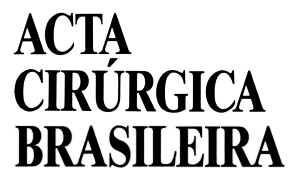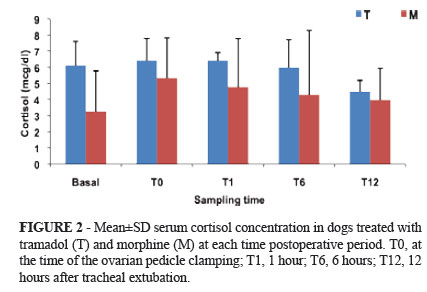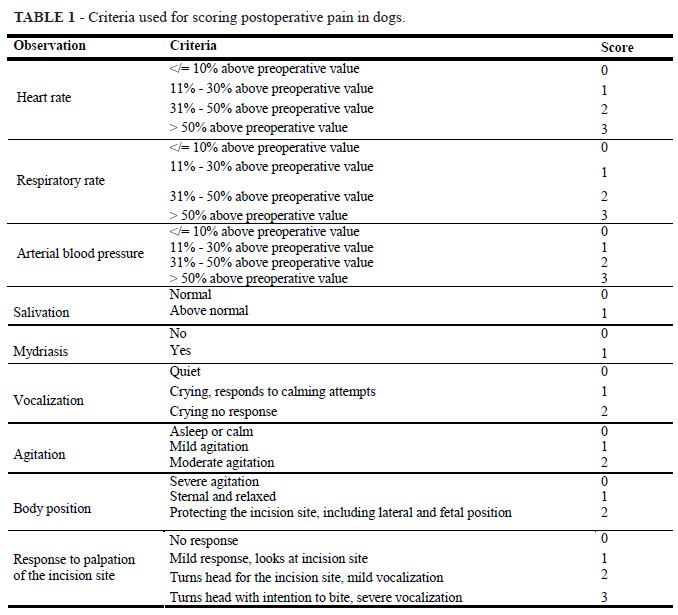OBJETIVO: Comparar o efeito analgésico pós-operatório do tramadol em relação à morfina quando utilizados por via peridural em cadelas submetidas à ovariosalpingohisterectomia (OSH). MÉTODOS: Dezesseis cadelas foram aleatoriamente distribuídas em dois tratamentos, com oito animais em cada, tratadas com morfina (0,1mg kg-1, M) e tramadol (2mg kg-1, T). A medicação pré-anestésica foi feita por via intravenosa (iv) com acepromazina (0,05mg kg-1), seguindo-se indução e manutenção anestésicas com propofol (4mg kg-1 iv) e isofluorano, respectivamente. O grau de analgesia foi avaliado uma, três, seis e 12 horas após o término da cirurgia, com escala descritiva numérica, que incluiu a observação de alterações fisiológicas e comportamentais. Animais com escore > 06 foram tratados com morfina (0,5mg kg-1). A concentração sérica de cortisol foi mensurada antes da sedação (basal), ao término da cirurgia (T0), 1 (T1), 6 (T6) e 12 (T12) horas após a cirurgia. RESULTADOS: Os escores de dor e a concentração sérica de cortisol não diferiram entre os tratamentos. Analgesia de resgate foi necessária em um cão do tratamento T. CONCLUSÃO: A administração peridural de morfina e de tramadol resulta em analgesia adequada e de longa duração em cadelas submetidas à ovariosalpingohisterectomia.
Analgésicos Opióides; Tramadol; Morfina; Analgesia; Ovário; Histerectomia; Cães



